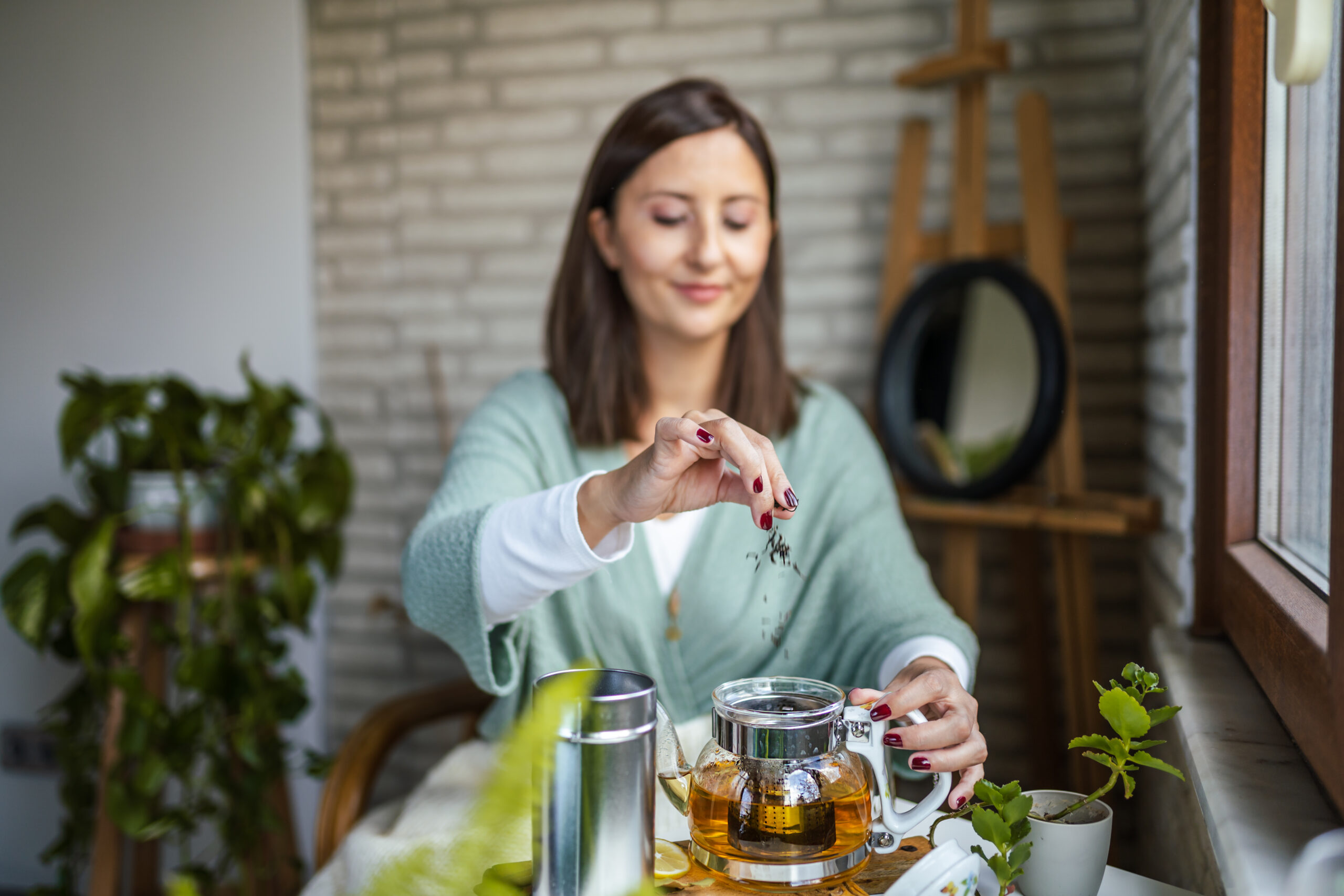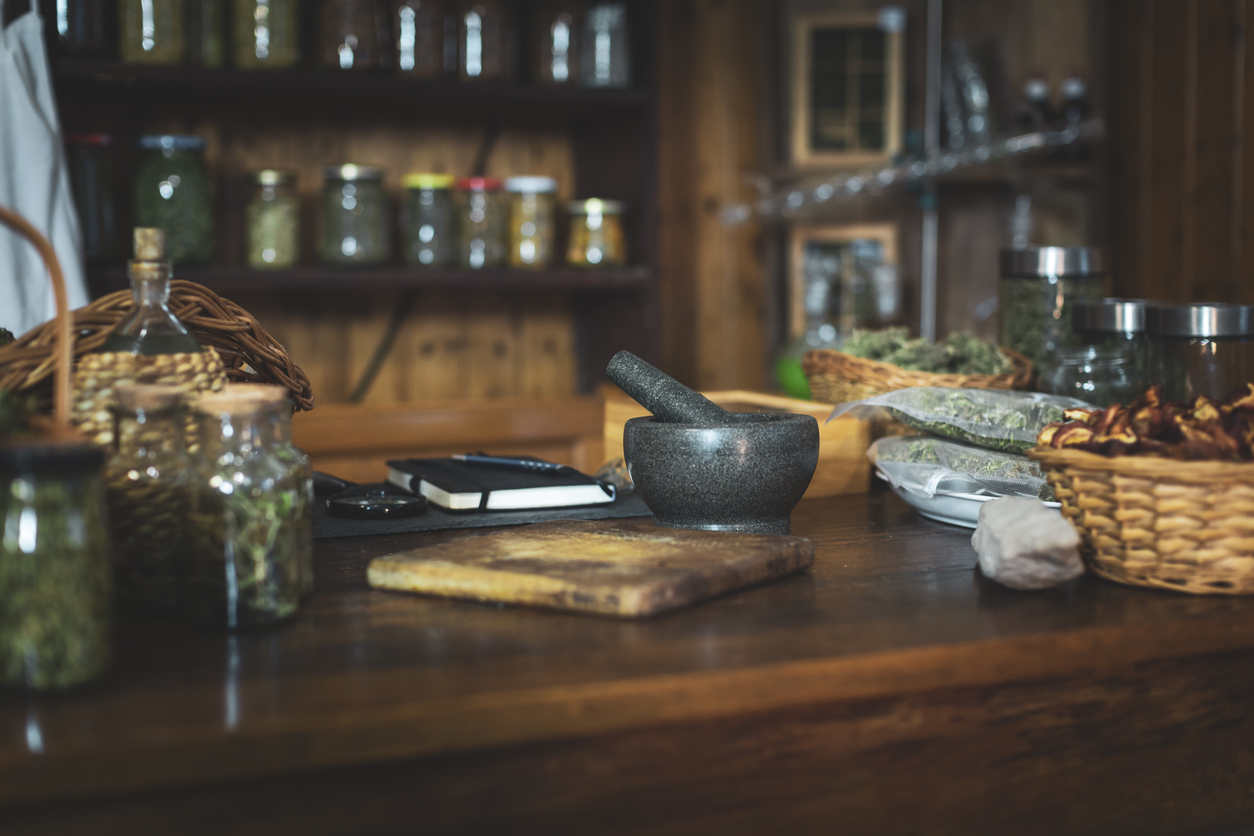Herbal Teas for Cold Weather Comfort: Blending Health and Tradition
| By Carly Barrett | 0 Comments

As the cold weather sets in, there’s nothing like a warm cup of herbal tea to bring comfort and joy. Finding solace in a steaming mug of carefully curated herbs can be both a delightful tradition and a boon to your health. In this blog post, we’ll explore two enchanting herbal tea blends, curated by Maryland University of Integrative Health’s Herbal Dispensary, that not only taste divine but also offer a plethora of health benefits to help you navigate the challenges of the winter season.
“Winter Survival Tea”
This first herbal blend, aptly named the “Survival Tea,” is a harmonious mix of herbs designed to support your body’s natural response to stress and exhaustion during the winter season. Let’s delve into the ingredients that make this tea a comforting elixir:
- Eleuthero Root: Known for its adaptogenic properties, eleuthero root helps the body adapt to stress and combat fatigue.
- Dandelion Root: A fantastic tonic for the digestive system, dandelion root restores function and promotes overall digestive health.
- Yellow dock Root: Traditionally used to address bowel sluggishness, yellow dock root supports healthy digestion.
- Fennel Seed: Eases digestive woes, including indigestion and bloating.
- Licorice Root: Helps restore adrenal function and combat fatigue, providing a natural energy boost.
- Cardamom Seed: Not only does cardamom add a delightful taste, but it also offers warmth and soothes digestion, making it perfect for the autumn and winter seasons.
Brewing Instructions: Add 3.5g of the herbal blend to 2 cups of water on the stove. Bring the water and herbs to a boil, then reduce the heat and let it simmer for 15 minutes. Strain and enjoy in the presence of great company.
“Serene Night Tea”
For those peaceful moments during the winter season, the “Serene Night Tea” combines a blend of herbs to ease mental tension and promote a sense of calm and well-being. Let’s explore the ingredients that make this tea a soothing elixir for the soul:
- Holy Basil: Revered for centuries for its ability to ease mental tension and promote spiritual enlightenment, holy basil is a key ingredient in this blend.
- Linden Leaf & Flower: With mild sedative properties, linden leaf and flower contribute to the overall calming effect of the tea.
- Marshmallow Root: Slightly sweet and moisture-inducing, marshmallow root adds a gentle touch to the blend.
- Lemon Balm Herb: Highly fragrant and uplifting, lemon balm herb calms the mind and adds a delightful flavor to the tea.
- Elderberry Fruit: Packed with antioxidants, elderberry fruit provides a potent boost to the immune system.
- Catnip Herb: Ideal for calming anxious children, catnip herb brings a sense of ease and excitability relief.
- Lavender Flowers: Deeply fragrant and relaxing, lavender flowers support an uplifted mood.
Brewing Instructions: For a strong, relaxing brew, add 10g of the herbal blend to 1.5 cups of hot water and steep for 20 minutes. Strain and savor the tranquility in every sip.
Whether you’re seeking stress relief, digestive support, or a moment of calm, these carefully crafted herbal blends are here to enhance your well-being during the colder months. So, gather your loved ones, brew a pot of tea, and let the warmth and goodness of these herbal elixirs envelop you in comfort and joy.










